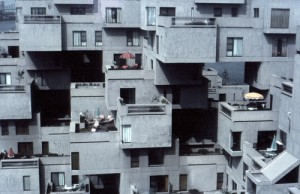Ask the Pigs
“If we want to understand the physical environment we should not ask architects about it,” writes Jonathan Meade in his new book, Museum Without Walls, (excerpted here). “After all, if we want to understand charcuterie we don’t seek the opinion of pigs.” Meades’s point is that the environment is much too valuable—and much too complex—to be entrusted to a single profession. Designing buildings is a perfectly respectable occupation, but architects want more, they want to create places. But places are created by their occupants over time, not by designers on paper, and most architectural attempts at place-making, such as megastructures, public housing projects, and planned communities, have run aground. I’m not sure when architects’ ambition expanded to encompass “the environment,” as opposed to buildings. Team Ten, which promoted an environmental view of building, met in Otterlo in 1959, which was the same year that the school of architecture at Berkeley was renamed the College of Environmental Design. Christopher Alexander’s Notes on the Synthesis of Form appeared in 1964. Moshe Safdie built Habitat in 1967. Habitat is a fine project, but only because the city of Montreal is next door—a city of Habitats would be unsupportable. Decades later, when Safdie master planned the new city of Modi’in inIsrael, he did not design the whole thing but made sure that many architects, developers, and builders were involved. The result is less perfect but more real.

Habitat, Montreal.
Witold Rybczynski's Blog
- Witold Rybczynski's profile
- 178 followers



